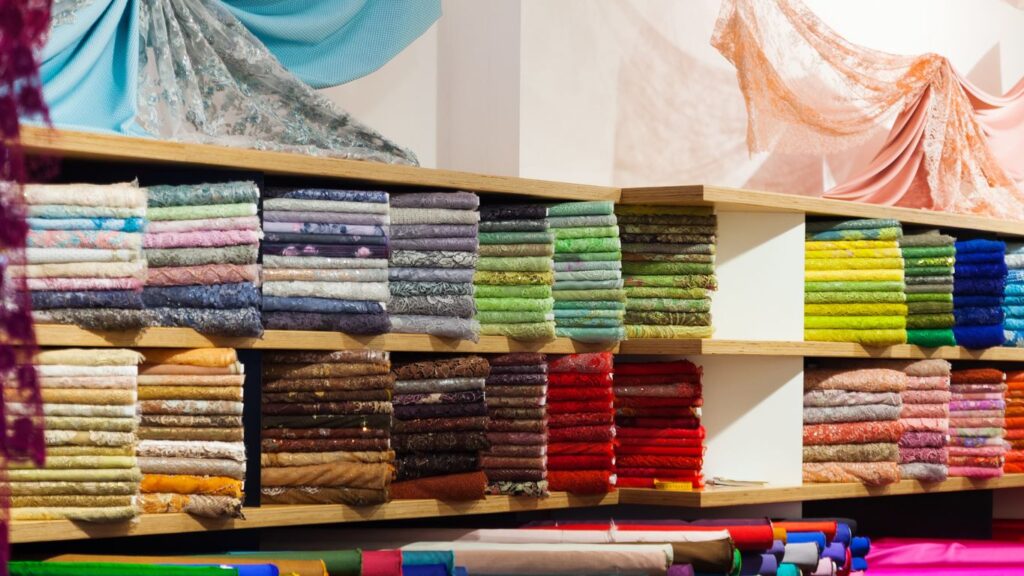Fashion and clothing business keeps developing, but the level of need of personalized and well-fitting clothes does not go away. Knowing how to start a tailoring business in the year 2026 is an opportunity to start a creative and profitable business that involves craftsmanship and entrepreneurship. You can either be a fan of ethnic clothes, modern style, or custom tailoring but this very detailed guide will guide you on how to start a tailoring business. Since it is available in home based studios, online boutiques, the opportunities are limitless to talented tailors who are willing to sew their success to the thread.
Understanding the Tailoring Business Landscape
Tailoring business is based on the provision of custom clothing services, alterations, and creation of custom-made clothes according to the needs of a single customer. Personalization is the key factor in this industry, and it provides the solutions that cannot be associated with ready-made clothes and creates a long-term relationship with customers who appreciate quality craftsmanship.
Different Types of Tailoring Setups
1. Home-based tailoring studio

A tailoring business that runs in the home set up is a very good starting point to an ambitious businessman who has a small capital base. This arrangement enables you to work at convenient time and handle home duties and little investment is necessary in infrastructure. You can setup a room or corner of your own to your craft and slowly establish a client base by word of mouth and networking within the locality.
The home studios are especially effective in the case of part-time tailors, stay-at-home parents, or retired individuals seeking income supplements. The maintenance fees are not very high because you do not need to pay rental fees when living in a comfortable space that is of your own.
2. Local tailoring shop / small-scale unit

It is more visible and credible to your tailoring services through a physical store front in a commercial place or market place. The advantage of this traditional model is that it will bring in the walk-in customers and establish customer presence in the society and it will be less difficult to gain the trust.
You would be able to show fabric samples, present your portfolio, and provide instant consultation to your potential customers who visit your shop. Small-scale units will also accommodate more staff members and will help you manage the bigger volumes of orders and different types of garments. Investment is moderate, and one has to carefully select the location to strike a balance between rental prices and accessibility to customers and other potential footfalls — an essential consideration when learning how to start a tailoring business successfully.
3. Online tailoring business or digital boutique

The digital revolution has revolutionized the way tailoring services are offered to customers, in which entrepreneurs are able to work without geographical limitations. Those exploring how to start a tailoring business can now build an online presence with ease. A tailoring online enterprise uses social media tools, e-commerce, and online catalogs to advertise designs and take orders remotely. Customers are able to shop collections, place orders online, take measurements, choose fabrics, and get their tailor-made clothes delivered directly to their doorstep.
The model saves a lot of overhead cost and also increases your potential customer base that is not limited by geographical boundaries. The integration of technology, professional photography and the ability to develop and maintain good courier relationships are the keys to success in such a format.
Market Insights
The Indian tailoring industry is recording phenomenal expansion due to the rising demand of tailor-made products towards the mass-produced products. Corporate clothing that fits well is desired by the urban professionals whilst the ethnic and bridal markets have remained to be going well with clients ready to spend their money on unique designs.
The emergence of social media has offered tailors new avenues to market their products to younger audiences who appreciate unique designs and excellence. Moreover, sustainable fashion trends also persuade the consumer to utilize quality and custom-made items instead of fast-fashion apparel that provides a positive environment to allow skilled artisans to flourish — making tailoring one of the most promising Business Ideas in India for aspiring entrepreneurs who value creativity and craftsmanship.
Step-by-Step Guide for Starting a Tailoring Business
Step 1: Create a Tailoring Business Plan
- Vision Statement: Answer the question, what do you want to achieve in the long run and what sets your services apart.
- Target Audience: Determine the customer populations you are going to serve such as a bride, professional, or student.
- Service Portfolio: Display all the offerings such as modifications, custom designs, embroidery or special clothing.
- Financial Forecasts: Project start-up costs, monthly costs, sales projections and break-even schedules.
- Competitive Analysis: Conduct a study of the pricing, specialization, turnaround times, and marketing strategies of the local competitors.
Step 2: Estimate Start-up Cost & Profit Potential
Knowing the financial environment is the first step of starting your business and makes you make better decisions and find the required finances. Below is the full financial prospectus of investment and profit potential.
- Equipment Investment: Prime quality sewing machines, cutting tools and finishing equipment.
- Set-up of workspace: Set funds aside to rent deposits, furnishings, lighting and seating of customer.
- Raw Materials: Have on hand basic fabrics, thread, buttons, zippers and ornaments to be used in first orders.
- Marketing Budget: Save money that can be used to do business cards and signage, social media promotions and launching of the business.
- Working Capital: Have 3-6 months of operating costs in the form of buffer funds.
- Working Capital: Maintain buffer funds for three to six months of operational expenses.
Average Start-up Investment
| Business Type | Investment Range | Key Components |
| Home-based Studio | ₹50,000 – ₹1,50,000 | Basic machines, small material inventory, minimal marketing |
| Small Shop | ₹1,50,000 – ₹4,00,000 | Rent advance, commercial equipment, furnishing, signage |
| Online Boutique | ₹75,000 – ₹2,00,000 | Professional photography, website, digital marketing, logistics |
| Premium Atelier | ₹4,00,000 – ₹8,00,000 | Prime location, designer equipment, luxury interiors, brand building |
Cost Breakdown
| Expense Category | Home-based (₹) | Shop-based (₹) | Online (₹) |
| Machines & Equipment | 40,000 – 80,000 | 1,00,000 – 2,50,000 | 60,000 – 1,00,000 |
| Space Setup/Rent | 10,000 – 20,000 | 50,000 – 1,50,000 | 15,000 – 30,000 |
| Raw Materials | 15,000 – 30,000 | 40,000 – 80,000 | 25,000 – 50,000 |
| Marketing | 5,000 – 15,000 | 20,000 – 50,000 | 30,000 – 80,000 |
| Licenses & Registration | 5,000 – 10,000 | 10,000 – 20,000 | 5,000 – 15,000 |
| Miscellaneous | 5,000 – 15,000 | 15,000 – 30,000 | 10,000 – 25,000 |
ROI and Profit Margin Expectations for the First Year
| Business Model | Monthly Revenue Potential | Net Profit Margin | Break-even Period |
| Home-based | ₹20,000 – ₹50,000 | 40% – 60% | 3-6 months |
| Small Shop | ₹50,000 – ₹1,50,000 | 35% – 50% | 6-9 months |
| Online Business | ₹40,000 – ₹1,00,000 | 45% – 65% | 4-8 months |
| Specialized/Luxury | ₹1,00,000 – ₹3,00,000+ | 50% – 70% | 8-12 months |
Step 3: Register & Legalize Your Business
Legal organization and performance ensure that you safeguard your interest in business and gain trust among the customers and financial organizations.
Business Structure
Proprietorship
The easiest form of business where one person owns and runs the tailoring business. This structure is the least paperwork, has total decision-making power and the tax system is simple with personal income tax filing. Proprietors are liable indefinitely, that is, business debts or legal claims might mean that personal property is at stake.
It is perfect when you have a limited amount of initial capital and the operations are small with profits minimal enough to determine the viability of the business and later venture into large scope. Registration fees are low and it is the most readily available to first time business people, especially those exploring business ideas in Gujarat or other regions with strong local demand for customized services.
Partnership
In case two or more people plan to start a tailoring business, partnership would provide responsibility and resources. The partners bring in capital, expertise and hard work based on terms that are agreed upon and share profits and losses equally. This structure allows sharing of expertise in the sense that one partner may do the design and the other partner will do the operations and marketing.
Partnership actions also provide a clear role, proportion of investments and dispute resolution in order to avoid conflicts in the future. Although it provides more resources than proprietorship, partners are not so limited because they are unlimitedly liable except when they are registered as a Limited Liability Partnership.
Private Limited Company
This business system is the most credible and legally secure because it consists of a separate entity that does not belong to its owners. Shareholders obtain limited liability and all the assets are at risk are the amount they have invested in the business and not their own assets in case of failure. Easy access to funds in the form of loans and the interest of a potential investor in your tailor shop will be easier with the help of the registration of the company as a Private Limited.
It needs an even more complicated compliance such as annual returns, board meetings, and audits when a structure is appropriate to ambitious entrepreneurs who intend to grow the business by a significant figure. It provides an unlimited succession i.e. the business will not end despite a change in ownership.
Key Registrations
- GST Registration: The registration is compulsory in case the annual turnover is greater than 40 lakhs, which makes it possible to collect tax legally.
- Trade License: Municipal permit in order to conduct commercial tailoring operations in the desired location.
- Udyam Registration: MSME certification that gives the access to government schemes, subsidies, and priority lending.
- Registration of shop Act: Shop registration at the state level wherein your tailoring shop is registered as a lawful business establishment.
- Professional Tax: This is a business tax that covers state specific tax registration when the business has employees or when the business makes above the taxes.
Compliance & Safety
- Fire Safety: It will be wise to have the right extinguishers installed and have clear emergency exits in your work place.
- Electrical Standards: Make sure that all tailoring machines are wired, circuit breakers and grounded properly.
- Labor Laws: adhere to minimum wage, working hours and benefits laws.
- Insurance Coverage: Have all equipment, inventory and premises under full business insurance policies.
- Health Permits: Keeping places hygienic and adhering to local health department requirements of business premises.
Step 4: Set Up Your Tailoring Workshop or Studio
- Selection of the location: Select high visibility areas and good accessibility and availability of parking facilities in the areas.
- Space Planning: Plan efficient workflow areas between cutting, stitching, fitting and finishing areas in a logical manner.
- Equipment Procurement: Buy industrial grade sewing machines, overlocks, steam irons and cutting tables.
- Lighting Design: Have good natural spectrum lighting installed so that the color matching and detailing can be correct.
- Storage Solutions: Establish revised systems of fabric inventory, finished clothing and customer order handling.
Step 5: Build Your Tailoring Skills and Hire the Right Team
- Skill Development: Keep on modernizing skills in workshops, internet classes, and research in the trends of the industry.
- Staffing Strategy: Hire experienced tailors, pattern makers, and finishing experts that are associated with your scale of business.
- Training Programs: Implement a set of standard quality protocols, and train the members of your staff about your brand standards.
- Specialization Balance: Balance between generalist tailors that do run of the mill with specialists that do complex or niche designs.
- Performance Metrics: Develop quality standards, turnaround time standards, and customer satisfaction measurement standards.
Step 6: Branding, Naming & Marketing Strategy
- Brand Identity: Build a character that portrays your customization, ethics and preferences of customers.
- Online Presence: Develop work related social media pages that feature portfolio work, customer reviews and design processes.
- Content Marketing: Post styling tips and fabric care tips and behind-the-scenes content to attract audiences.
- Local Networking: Collaborate with event planners, boutiques and fashion bloggers in order to increase referral networks.
- Promotional Campaigns: Introduce seasonal discounts, referrals and loyalty schemes to promote repeat business.
How to Name Your Tailoring Brand
- Memorable Appeal: The customers should find it easy to remember and spell their names.
- Relevance Check: Be able to see your name clearly as it is a representation of your specialization, style or a unique selling proposition.
- Domain Availability: Confirm identical social media accounts and web domain names prior to the finalization of the name.
- Cultural Sensitivity: Do not use names that have an inappropriate meaning in other languages or cultures.
- Legal Clearance: Do trademark searches to make sure that no other businesses with same or similar names are in operation.
Branding Essentials: Logo, Business Card, Packaging Tags
- Logo Design: Design an adaptable emblem of your trade, which can be used in all your marketing materials.
- Business Cards: This contains contact information, services provided, and QR codes connecting to portfolios or websites.
- Packaging Tags: Design branded tags with instructions on how to care of clothes further promoting professionalism in the presentation of finished garments.
- Color Psychology: Choose brand colors that portray the desired mood, such as elegance, creativity, trust or modern style.
- Consistency Standards: Have a cohesive branding of all touchpoints in stores and online.
Step 7: Launching Your Tailoring Business Online
To begin a tailoring business in the digital era, it is important to know how to make use of technology platforms that reach a wider audience.
Platforms
- Instagram Showcase: Use visual narratives based on quality garment photos, reel, and transformation posts by the customer.
- WhatsApp Catalog: Build online product catalogs where customers could view products and take orders easily.
- Shopify Integration: Construct online shops with shop measurement directions, custom-made and safe payment portals.
- Facebook Marketplace: List customization in localities using targeted demographic and geographic promotion.
- Pinterest Inspiration: Pin boards, style inspirations and fashion trends that please the design need of customers interested in creative direction.
How to Start a Tailoring Business Online
- Professional Photography: Spend money on good photographs of products with all details of clothes, fit and fabric texture.
- Measurement Systems: Design effective video tutorials and printable instructions that assist the customers to enter precise body measurements.
- Virtual Consultations: Provide virtual consultations, including video calls, to discuss the design, select the fabrics, and make individual styling proposals.
- Payment Integration: Install reliable online payment systems such as UPI, cards and digital wallets to provide convenience to customers.
- Logistics Partnership: Development of partnership with trusted courier companies that are aware of safe and punctual delivery of completed garments.
Step 8: Managing Finances, Pricing & Profit Margin
How to Price Services (Labor + Fabric + Markup)
- Calculation of Labor: Calculate the time needed on the different types of garments, and multiply it by the expected hourly wage.
- Material Costing: Determine precise quantities of fabric to be used in addition to accessories including wastage buffer percentages.
- Distribution of Overhead: Apportion the rent, utilities, machine depreciation, etc., on the estimated volume of orders to be placed each month.
- Competitive Benchmarking: Study local market rates that make sure that your prices are competitive and profitable at the same time.
- Appreciate Valuing Communication: As a way of justifying premium pricing, they include quality craftsmanship, customization choices and excellent customer service.
Typical Profit Margins in Tailoring
- Simple Changes: Retain 60-70 percent on simple hemming, fitting amendments, as well as small amendments.
- Custom stitching: 40-55 margin on custom made clothes with moderate level of design.
- Designer Wear: Set 55-70% margins on the complex designs, high quality fabrics, and unique style services.
- Bulk Orders: Accept 30-45 percent margins to institutional clients who need uniforms or a contract of large quantities.
- Addition of accessories: To increase the profitability, by complementary sale of buttons, zippers, linings, and ornamentation.
Expense Tracking, Revenue Forecasting, and Reinvestment Tips
- Daily Recording: Record all the expenses as they occur that avoid omissions that create a false perception of the profitability analysis.
- Category Classification: Divides the expenses into fixed overhead, variable production and discretionary marketing expenses in a systematic manner.
- Revenue Patterns: Determine how the season varies; which months are most likely to be $ and how the customer responds to the payment anticipating their flow of revenues.
- Reinvestment Planning: Distribute profits strategically in terms of equipment upgrades, skill development or selling expansions plans.
- Emergency Reserves: Establish emergency funds that will finance three to six months of operations in the event of an unforeseen occurrence.
Tools for Managing Accounts and Taxes
- Tally Software: Tally software is the complete accounting system that manages invoices, expenditure, inventory and compliance requirements of the GST.
- QuickBooks Online: Web-based service which includes real-time financial reports, automated reporting and accessibility across different devices.
- Zoho Books: Low-end software that offers small business owners integrations of banking, invoicing, and tax filing.
- Excel Templates: With limited technology budget, make customised spread sheets in excel to do basic bookkeeping.
- Professional Consultation: Consult chartered accountants on a regular basis on tax optimization, compliance checks, and financial planning.
Step 9: Customer Relationship & Retention
- Personalized Service: Keep in mind customers preferences, order history and special events to contact them with a personalized message.
- Quality Consistency: Enforce high standards that guarantee all the garments follow the commitments in terms of specifications and level of craftsmanship.
- On Time Delivery: Honor upheld religiously, and the occurrence of any inevitable delay was communicated in advance.
- Feedback Mechanisms: Be proactive in getting customer feedback, via surveys, reviews and conversations, taking up and enacting the feedback on improvement recommendations.
- Loyalty Programs: Rewards to repeat customers are provided in the form of discounts or priority scheduling or even access to new designs.
Step 10: Grow & Expand Your Tailoring Business
- Diversification of Services: Add such services as styling lessons, wardrobe changes, or fashion classes.
- Branch Expansion: Add more branch outlets in other neighbourhood after the core business is stable.
- Franchise Opportunities: Standardize the systems that will allow other people to run under your brand name systematically.
- Wholesale Partnerships: wholesale by supplying specific clothes to boutiques or retailers, or corporate customers in need of large-scale manufacturing.
- Digital Products: Develop online classes to impart customizing skills, make money off your knowledge without having to make physical clothes.
Conclusion: Stitch Your Success Story
To learn how to start a tailoring business, one must be able to combine creativity and business skills, patience and persistence, and the old craftsmanship with the new marketing strategies. The path to the first idea towards the developed business requires thorough planning, constant education and dedication to quality.
A home studio, a brick-and-mortar store, or a web-based store, you have to know your customers and how to serve them with outstanding value and establish a long-term relationship. By being passionate and tactical, your tailoring company will thrive and not only earn income, but also inspire in carrying out your job of fashioning your community and doing so perfectly.
FAQs
Is tailoring business profitable?
Yes, personalizing businesses is a most profitable business with a margin of forty per cent to seventy per cent depending on the specialization and positioning in the market.
How much doe s it cost to start a tailoring shop?
Initial expenses normally lie between one and a half lakh rupees to five lakh rupees with regards to location, quality of equipment and the scale of business selected.
How to start a tailoring business from home?
Start with simple sewing materials, prepare a working area, get appropriate licenses, and market the services using local contacts and social networks and platforms.
How can a tailor attract customers?
Develop effective portfolio, have active presence in social media, provide competitive pricing, deliver products on time and referrals by satisfied customer.
What equipment do I need to start a tailoring business?
Basic equipment would also include heavy duty sewing machines, overlock stitchers, cutting tables and measuring tools, irons and simple accessories such as threads and needles.
How to start a tailoring business in India with no money?
Begin at home with equipment in place, accept orders in advance, start with the changes that do not need a large amount of investment and reinvest the profits over time.



